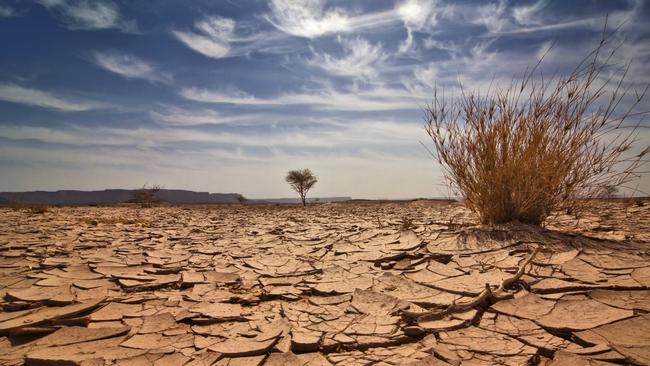
We are timidly, tentatively planting a crop of garlic and pruning the olive groves. Hopeful of future harvests but far from confident. Just a few days ago we had to buy another tankerload of water for the homestead and most of the dams across Elmswood’s 10,000 acres (we still measure land by acreage in the bush) are still as dry as the proverbial “dead dingo’s donger”.
Majestic trees shading the homestead – some a century old – have died, along with scores in what used to be “the garden”. And everywhere, the tough local trees – even she-oaks – are skeletal. At least the rocks – the only crop that seemed to grow – are, for now, hidden.
When the drought was at its worst, many farmers gave up. There were a few suicides in the district. Animals, too, surrendered. Some cattle dropped dead in the paddocks while two kangaroos lay down and died near a pond we’d managed to keep moist. Only a dozen cattle are left from our once-large herd, but prices are now prohibitive as farmers find the courage and the cash to restock. The kangaroo population will bounce back (forgive the pun) along with the ferals. Rabbits, pigs, deer will multiply as if by magic with wild dogs and foxes preying on our only surviving sheep, a small flock of rare “Shroppies”, watching for their first lambs.
The nearest town was battered by the drought, though we were spared the worst of the bushfires (only one in our back country, caused by a lightning strike). More and more empty shops in Kelly Street. Then came the Covid-19 crisis. It’s hard to see the likes of Scone fully recovering.
And the newspapers put into hibernation in the Hunter Valley? Can they ever be resuscitated? Nail after nail into the rural coffin. With climate change temporarily eclipsed and still to be confronted. The endless coal trains still rumbling by, heading from the Hunter Valley mines to the coal port of Newcastle. Business as usual.
Ironies abound. The prayed-for rain first blessed us with an illusion, a so-called “green drought”, a sheen of green over baked earth. Then the rains came heavier. No flood problems for our region, but enough for the inevitable erosion caused by the combination of drought and overgrazing by farmers who held off destocking. Now more rain has followed, and a flush of lush grass. Destined to brown off for another summer of fires. And how will we cope if Covid-19 is still around? How do you fight fires while observing social distancing?
And what if the drought isn’t over? Just in remission? Officially some parts of NSW are still “afflicted”, much of it “affected”. As are wide tracts of the sunburnt country. It’s not over here until the cracked ceramic bowls of the dams are full.
Add up the numbers of individuals, areas, communities still affected – emotionally and financially – and you’ll come up with statistics that challenge those of Covid-19. And there is no “herd immunity” for drought, no possibility of a preventative, curative jab. Just a future where droughts get bigger, deeper, longer. As long as we keep harvesting the Hunter Valley’s crop of coal – and let those endless coal trains keep rolling.




With the drought swept under the carpet of tall green grass, with a trickle of water flowing down the Pages River for the first time in years, it’s time to check the damage.